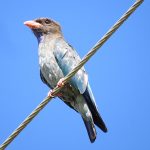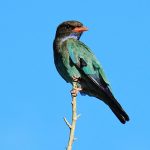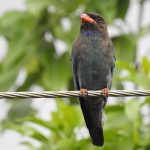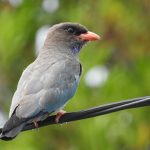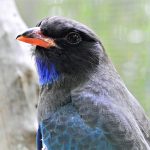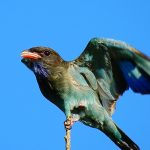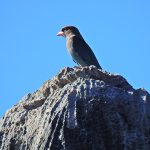DOLLARBIRD
The Dollarbird belongs to the family Coraciidae and it is found in various parts of Asia and Australasia. Its range includes countries such as India, Southeast Asia, Indonesia, New Guinea, and northern Australia.
It is a migratory species, and its distribution can vary seasonally.
Dollarbirds are striking and colorful birds. They have a deep blue-green plumage with a bright turquoise-blue crown and a distinctive circular patch of bright blue skin around their eyes. Their bills are broad and flattened, resembling a coin, which is why they are called “Dollarbirds.”
These birds primarily feed on a diet of insects, particularly flying insects like butterflies, moths, and beetles. They are known for catching insects in mid-air using their sharp beaks. They also eat some fruits and berries.
Dollarbirds are monogamous and usually nest in tree hollows or crevices. They are cavity nesters and do not build elaborate nests. The female typically lays 2-3 eggs, and both parents take turns incubating and caring for the young.
As migratory birds, Dollarbirds undertake seasonal movements. They are known to migrate southward during the non-breeding season, often moving to regions with a more temperate climate.
Dollarbirds are known for their loud and distinctive calls, which include a series of harsh, chattering notes. These calls are often heard during their breeding season and while defending their territory.
In some cultures, the arrival of Dollarbirds is seen as a sign of the changing seasons. They are also sometimes considered harbingers of rain, especially in parts of Asia.
Dollarbirds are fascinating birds with their striking appearance and unique behaviors, and they play important roles in the ecosystems they inhabit.

